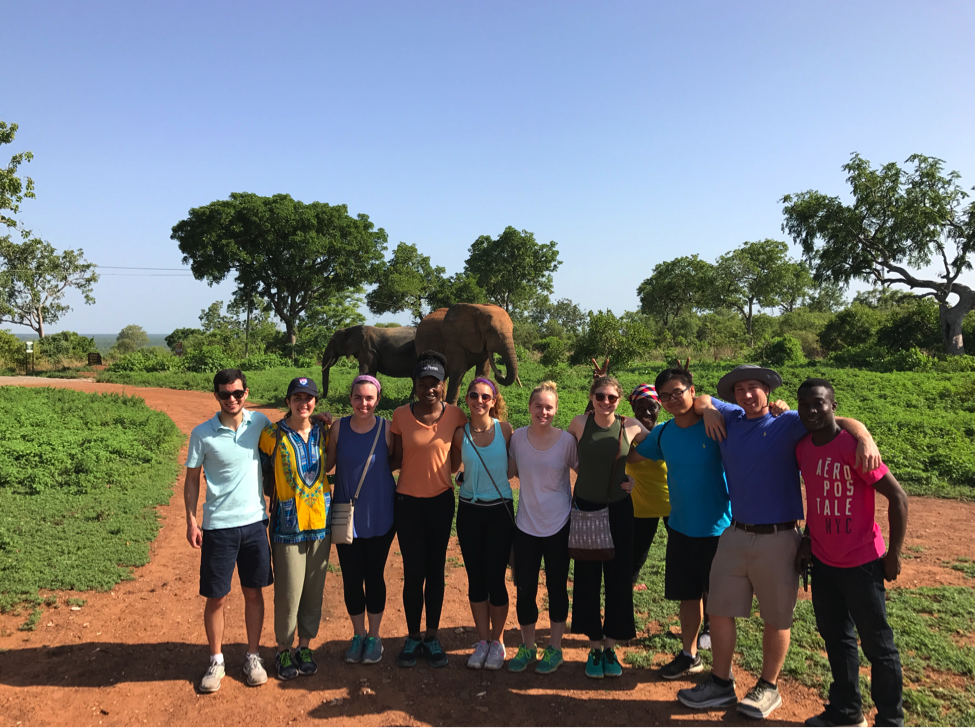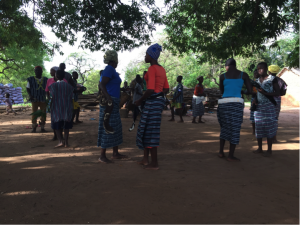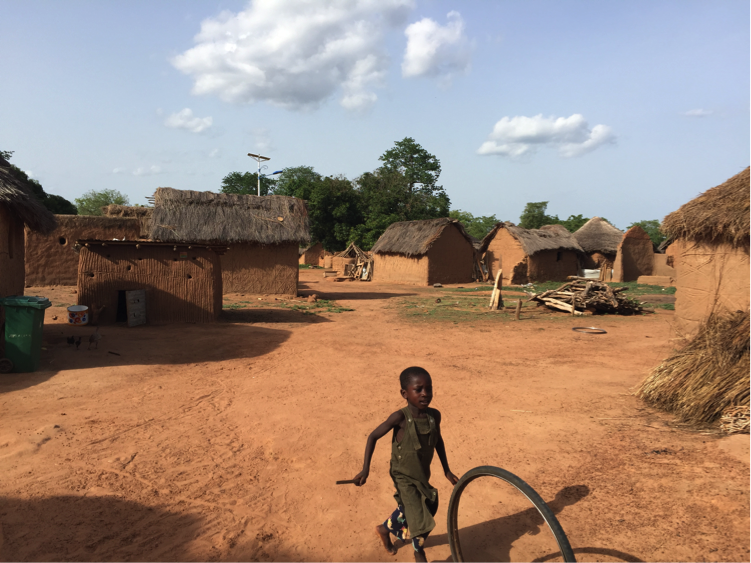by Jason Grosz, Bioengineering ’19; and Ethan Zhao, Bioengineering ’19

David Issadore, a faculty member in the Department of Bioengineering at the University of Pennsylvania teaches an engineering course ENGR566 – Appropriate Point of Care Diagnostics. As part of this course, he and Miriam Wattenberger from CBE, have taken nine Penn students, most of them majoring in Bioengineering, to Kumasi, Ghana, to study the diagnosis of pediatric tuberculosis. While in Ghana, these students are blogging daily on their experiences.
Today we set out on a 7 a.m. morning safari drive in Mole National Park. We rode on seats built on the roofs of Jeeps and drove along dirt roads dodging trees and spotting animals, such as cobs and wart hogs. A safari guide accompanied us on the roof to give directions to the driver, and the guide carried a large rifle in case an encounter with an animal went south. The highlight of the safari was running into two elephants right outside a building complex in the park. We saw two young males, one of which visited so often that park employees had named it Nash, and they were feeding on the wild mint plants that grew in the park. The guides told us that there were many such frequent visitors and that many of the elephants were named, a testament to how cordial the relationship between the park and the elephants was. They suspected that the elephants were just as curious of us as we were of them — as soon as we left, the elephants left the building complex as well. By the time the safari was over, it was around 11, and after lunch, we jumped into the pool as a reprieve from the blistering 100°F weather.

After lunch we visited a traditional African village named Bmognorie near Mole National Park. The village had a population of around 420 people who all lived in mud huts. Polygamy is practiced in the village, although monogamy is more common, and most families have around ten children. Our tour guide told us about life in the village and demonstrated how the villagers make shea butter, which can be used as a skin cream. He also said that sick villagers must travel on the back of a motorbike or bicycle for 30 km to reach the nearest clinic. The nearest hospital was 40 km away. After the shea butter demonstration, we watched and participated in traditional Ghanaian celebratory dances. Most of the dances featured everyone arranged in a rotating circle with complicated foot movements.
After the dances, we played with some of the children in the village. The children’s favorite game was to quickly roll bicycle tires with sticks for as long as possible. Although we tried to play with them, we were not nearly as talented and could not roll the tires for as long as the children could.

